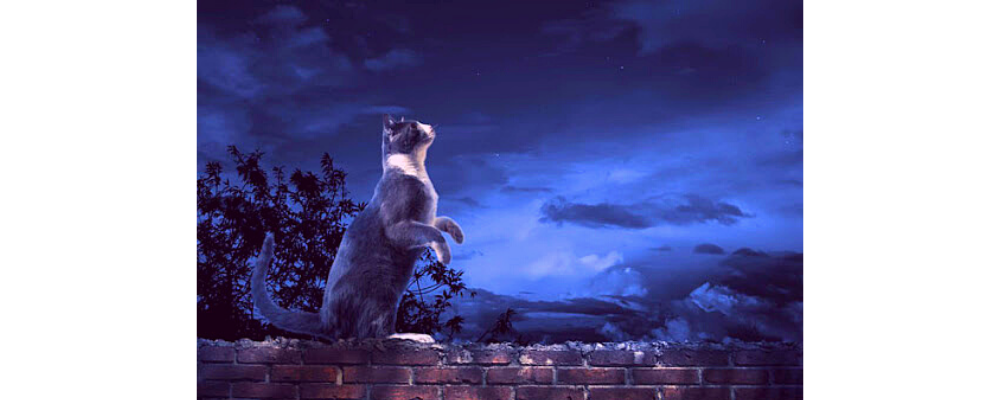Sonja Danowski’s story named Little Night Cat makes the reader think about mercy, animal- human relation and consuming. We can watch the story through Sonja Danowski’s brush as we read it through her pen.
Sonja Danowski’s story named Little Night Cat makes the reader think about mercy, animal- human relation and consuming. We can watch the story through Sonja Danowski’s brush as we read it through her pen. Story is like a part from our daily lives. Extremities, supernatural incidents or exaggeration cannot be seen and watercolour paintings of her are also as successful and plain as the book itself where there she sets some place for watercolour paintings as she does for words.
Toni, after hearing about the festival in animal asylum decide to do something for that: He decides to draw a picture for the lottery in the festival. Toni thinks that his drawing would not be enough for this festival which is organised for the needs of the animals in asylum and so he puts everything he finds precious such as his toy animals. So, anyone who sees these animals would buy tickets. Despite his mother’s objection he insists on helping and even says: “But mum, my animals also want to help.” (Danowski 6). Toni’s donating his own toys to help animals’ needs for medicine and food shows not only animal love but also his empathy. When Toni and his mother get back to home, Toni could not sleep since he gave all his animals to the lottery at asylum and so his bed is empty. When his mom realises this situation, she finds her toy cat Pol.
Pol, was at least 30 years old, its hair was shed at some places. Who knows what did it go through! Even its button eyes were not there. Toni caressed Pol’s head: “Poor thing!”
Toni came up with an idea. He went to bathroom and took a pair of round orange earrings from his mother’s jewellery box. This bead earrings had a black spot in the middle of them. These earrings were exactly for Pol! His mother sewed these new cat eyes to Pol’s face. “Here you are as beautiful as before, said Toni and got happy. (22)
Toni approaches to Pol with mercy and love. He does not throw it away thinking it is old and useless, he finds a solution to give him new eyes. Toni even does not think about buying a new toy instead of the ones he gave, even he cures Pol to some extent. Toni fill the gap of his toys with Pol’s and later on Valentin’s friendship.
Author’s tone, Toni’s reactions, Toni’s mother’s attitudes ae so “kind” that book actually shows a way regarding not only self-sacrifice or love but also the relation between humans and animals. Even though it is seen as if Valentine was the most outstanding character, there are also alligator, monkey, tiger in the drawings of Danowski and these toys seem to be highly realistic. This shows us that Toni’s relation with animals is not only limited to cats and dogs. The drawing he painted for the festival was a panther, even. Animals which are not liked are loved in Toni’s world. It means, Toni is not a boy who only gets on well with a couple of animals, but he has a strong communication with nature. On the other hand, as we read the story, through author’s drawings we see and know Tony, his mother and Valentin. These characters are not caricaturised, and this makes us to feel the story as a part of our life. For example, cat Valentine who was adopted by Toni’s mother from asylum is a kind of cat that can be seen anywhere with its grey colour and yellow eyes. It is neither a baby. This means that Toni does not get friends with animals because they are so cute or so beautiful but because he values them. At the same time, we see that animals were much happier at asylum. Actually, this is so thanks to Toni and people who “help” to asylum. One day Valentin leaves the house and it does not come for some time. Toni worries a lot:
"But one evening, as the sun downs Valentin run immediately, jumped on the three whose branches extends to balcony, went down and got lost. ‘’It went to an evening walk. Do not worry, it will be back’ said his mother." (36).
Valentin’s leaving the house so easy and Toni’s mother’s not intervening it even though she adopted it herself actually shows a kind approach which does not manipulate animal nature. Valentin is forced to stay in the boundaries of a home when it lives in Toni and his mother’s house, that is why its going out is well seen by Toni’s friend. At this point, Valentin’s being not a bought cat but an adopted one is also important. Though selling pets at pet shops commoditises them, we watch and see something different from outer world: Toni’s kind point of view to animals and how to be real friends with them. Toni does not only do what he can do for the animals in asylum but also adopts Valentin as a friend not as a material. He does not even think that Valentine will not be back, when it leaves the house and his mother replies that it will be back; what makes him worried is whether Valentine can find the way to home. Toni starts singing the vat song and at that moment Valentine comes back. So, Toni sleeps peacefully. This shows that Toni has an emotional relation with Valentin, not a materialist one. The author combines the story with music by telling us about Toni’s mother’s joining to festival by playing cello and that Valentine like this sound very much and shares with us the notes of the song Toni has been singing ever since he saw Valentine. Listening to this song brings reader and the story much closer. The melody is as peaceful and calm as the story.
Sonja Danowski tell everything in the course of events, she does not make the reader to feel they are being taught. For example story does not include any definite or outstanding incidents and does not have any certain end. Toni is an ordinary child and he does not experience anything extraordinary. Besides, we see that music has a supportive role in the book.
To sum up, Litte Night Cat is a story which we are unfamiliar with but still very close to us. The book shows us that while seeing the respect for animal’ life and nature, love is not something based on “taking over”. When it reminds the needs of animals in asylum, it narrates them not as “buyable” but “adoptable.” As for moments when Toni thinks loud, there is a room for reader to put themselves in Toni’s shoes and empathize with animals. Story is successful in the way that it develops the feeling of belonging on readers. It also puts this feeling of belonging with love opposite to the mentality of immediate happiness based on consuming which takes not only adults but also the children under its influence. And we watch Toni’s happiness that he acquired by sharing and producing, not by desires or looking for it in distance.
Bibliography
Danowski, Sonja. Küçük Gece Kedisi. İstanbul: Beyaz Balina Yayınları, 2017.
[1] We thank Münevver Sueda Kocatürk, for enabling us to listen “Little Night Cat” song.

